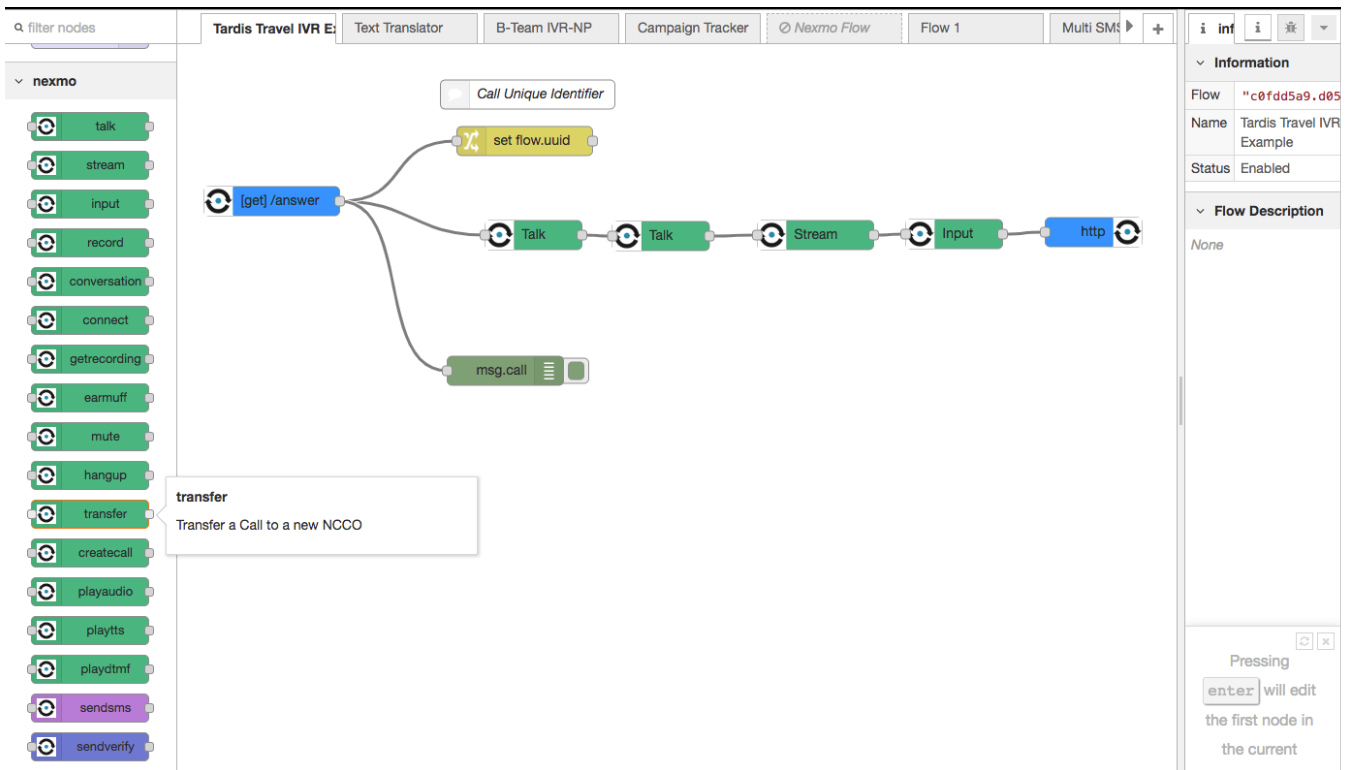Chances are you still mostly think of Vonage as a consumer VOIP player, but in recent years, the company also launched its Vonage Business Cloud (VBC) platform and acquired Nexmo, an API-based communications service that competes directly with many of Twilio’s core services. Today, Vonage is bringing its VBC service and Nexmo a bit closer with the launch of number programmability for its business customers.
What this means is that enterprises can now take any VBC number and extend it with the help of Nexmo’s APIs. To enable this, all they have to do is toggle a switch in their management console and then they’ll be able to programmatically route calls, create custom communications apps and workflows, and integrate third-party systems to build chatbots and other tools.
“About four years ago we made a pretty strong pivot to going from residential — a lot of people know Vonage as a residential player — to the business side,” Vonage senior VP of product management Jay Patel told me. “And through a series of acquisitions [including Nexmo], we’ve kind of built what we think is a very unique offering.” In many ways, those different platforms were always separated from each other, though. With all of the pieces in place now, however, the team started thinking about how it could use the Nexmo APIs to allow its customers in the unified communications and contact center space to more easily customize these services for them.
About a year ago, the team started working on this new functionality that brings the programmability of Nexmo to VBC. “We realized it doesn’t make sense for us to create our own new sets of APIs on our unified communications and contact center space,” said Patel. “Why don’t we use the APIs that Nexmo has already built?”
As Patel also stressed, the phone number is still very much linked to a business or individual employee — and they don’t want to change that just for the sake of having a programmable service. By turning on programmability for these existing numbers, though, and leveraging the existing Nexmo developer ecosystem and the building blocks those users have already created, the company believes that it’s able to offer a differentiated service that allows users to stay on its platform instead of having to forward a call to a third-party service like Twilio, for example, to enable similar capabilities.

In terms of those capabilities, users can pretty much do anything they want with these calls — and that’s important because every company has different processes and requirements. Maybe that’s logging info into multiple CRM systems in parallel or taking a clip of a call and pushing it into a different system for training purposes. Or you could have the system check your calendar when there are incoming calls and then, if it turns out you are in a meeting, offer the caller a callback whenever your calendar says you’re available again. All of that should only take a few lines of code or, if you want to avoid most of the coding, a few clicks in the company’s GUI for building these flows.
Vonage believes that these new capabilities will attract quite a few new customers. “It’s our value-add when we’re selling to new customers,” he said. “They’re looking for this kind of capability or are running into brick walls. We see a lot of companies that have an idea but they don’t know how to do it. They’re not engineers or they don’t have a big staff of developers, but because of the way we’ve implemented this, it brings the barrier of entry to create these solutions much lower than if you had a legacy system on-prem where you had to be a C++ developer to build an app.
0 Comments
Post a Comment